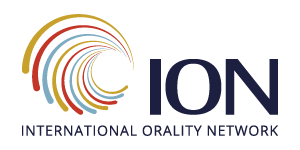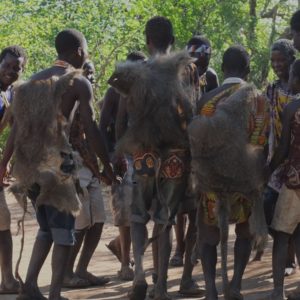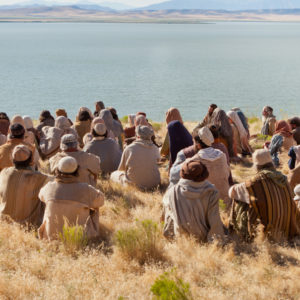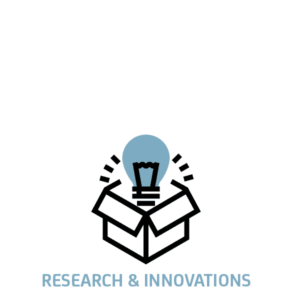The following is a chapter from the book ‘Oralities and Literacies: Implications for Communication and Education‘. A chapter will be posted here each week.
Editor’s Introduction
by Charles Madinger
Oralities and Literacies is long overdue in the sequence of publications focused on the Oral Majority. This volume reflects an emerging approach to publication that begins with a static version (e-publication and hard copy) with embryonic content. The responses to the authors are currently a work in progress to be added over a longer period of time, authors can revise their ideas, examples or even conclusions, and as readers interact with those ideas and examples they may also add to the dialogue.
The content of the book originated at a forum for ministry leaders and theological educators hosted by Oklahoma Baptist University: Orality and Literacies: Implications for Communication and Education. The articles (now chapters in this volume) were written in advance so that forum participants could reflect and respond to the thoughts and practices set out by each contributor. A moderator (Grant Lovejoy) interviewed the contributors and led the entire group into discussions on Oralities and Literacies, Oralities/Literacies in Ministry, and Oralities/Literacies and Theological Education. Each of the ensuing discussions was audio recorded and will provide a “response” addendum to each chapter as the digi-book grows over the next weeks and months.
As a “digi-book” you can read it, send comments or suggested revisions to the editor, and those suggestions could easily appear in the volume in a matter of days. More research? We’ll insert or reference it as any peer reviewed journal might filter and accept any relevant contributions to the topic. The links to projects, organizations or other materials have the ability to take footnotes and citations into the 21st century. Likewise, the embedded audio and video files may help you relate as you meet the authors or see and hear examples they think may be helpful. You can also send those kinds of files for digi-revisions.
The Orality Discussion
The International Orality Network (ION) committed itself to promoting the ongoing discussion of orality as it relates to engaging all peoples with the Word. It is first a discussion – an interaction of scholars and practitioners trying to unlock doors that lead to connecting with people by the preferred ways and means of communication and learning of those people. At any given point on the timeline of that discussion, the conversation simply reflects the current state of our understanding. We know that we see things by the light of our present understanding, and simply hope to
When Walter Ong published his seminal work in the 1980’s, he articulated some critical points that rekindled a fire for heating up a discussion percolating through the ages. His work reflected the modern era and the research and study of Toronto School (University of Toronto) with Havelock, McLuhan, Goody and company. Ryan Bush (chapter 8) notes the place of Ong among Evangelicals, his early blind spots, and his roots as a Roman Catholic scholar. Their insightful connection with orality reliant audiences for centuries embedded church dogma without the direct use of textual ways and means. Gregorian chanting of the 5th and 6th centuries reduced church teaching into memorable transmission as the world plunged deeper into an even less literate era during the Dark Ages and urban centers virtually disappeared. The rosary gave believers a tangible means to remember and pray for what the churched deemed important.
Since those discussions surfaced in the mid-20th Century, the global Christian movement began asking important questions about how any given people best receive, process, remember and pass on truths and information especially as it relates to communicating the Good News of the Kingdom. These fresh winds came during a season when we were locked into our Guttenberg inspired frame of reference to the neglect of those living in another galaxy – an oral galaxy seeming alien to the worlds of textuality that dominate the values and power structures of the world.
Clarifying Terms
Created in God’s Oral Image. To clarify the discussion further, by “orality” we must begin with the biblical worldview and theological foundation that God by nature is an oral communicator. He created us in his image to communicate with and connect to Him by our shared capacities, and everyone shares that orality nature. Our communication differences come as a matter of degree from how we learned to rely on that oral nature based on our culture of origin.
A Conceptual Definition. Orality is “a preference for and/or a reliance on oral communication.” We’re no longer talking about earlier dichotomies like oral vs literate (and even more harmful terms: illiterate and “illiterates”) or even Primary and Secondary Oral Cultures since few, if any, purely primary oral cultures still exist. Some cultures and people function with a high orality reliance, and depend heavily on oral ways and means of communication. Others have a low reliance, and rely less on those oral ways and means and more on their print/text orientation and expressions. It is not a matter literacy levels, Western, non-western, Global South or any other premature orality assumptions.
Orality Begins with Inner Speech. In our early cognitive and social development every time we were consciously stimulated by our environment we had a craving to name it – initially through a cry or babble, but eventually given to words. The long-haired thing that barked someone told us was a “dog.” Every time we saw one we pointed and excitedly verbalized that new inner word. . . “dog!” This “inner speech” described by Lev Vygotsky, the 20th century child developmental psychologist, helps us understand that everyone functions primarily with orality from birth. We eventually learn to express that inner speech in a variety of ways that build on or are an extension of our orality. Verbalizing the inner speech, drawing a picture of the inner speech, physically acting it out with body motions, and writing it out with descriptive impressions represent just a few ways we socially extend our orality or perform it for ourselves.
Oralities and Literacies is a relatively new field of study, or more precisely a renewed discussion most notably hashed out by Plato and Socrates in the Grecian era. The description of these multiple oralities and literacies is nothing new. The Scriptures spoken long ago to the prophets (II Peter 1:21) then passed down through the ages came to us through multiple oralities – sometimes God spoke His words face to face (Moses), some through visions seen and heard by those God chose, others as He gave a song of faith or prompted a dance by inspiration of the Spirit, still others heard His voice clearly directing them with a message to the people (thus says the LORD), and most dramatically by allowing the Son’s incarnation to speak and act out his words (Hebrews 1:1-4).
The New Testament oracle of the Kingdom of God in the canonized version began with a genealogy and ended with multi-sensory revelation that ushered us into the very throne room of God leaving us to imagine our ultimate reality in the new heavens and earth. The very transmission of the message was oral from start leading to a formalized textual version. The rest is filled with songs, poetry, doxologies, laments, and even the epistles that we modernly dissect were more than likely performed at each hearing.
Multiple Literacies
Brian Street (King’s College London) widened the door to a further discussion on “New Literacy Studies” (NLS) that focus “not so much on literacy as a ‘technology of the mind’ (cf Goody, 1968, 1977) or as a set of skills, but rather on what it means to think of literacy as a social practice (Street, 1984).” The two distinct issues about literacies in this part of the discussion have to do with ‘autonomous’ and ‘ideological’ models of literacy (Street, 1984) and develop(ing) a distinction between literacy events and literacy practices (Street, 1988).” The autonomous model says that literacy itself (autonomously) affects social practices and values. Introducing non-literate people to reading and writing sometimes is claimed to improve cognitive skills, economic capacity and thus social interaction and standing in the community.
“The alternative, ideological model of literacy, offers a more culturally sensitive view of literacy practices as they vary from one context to another. This model starts from different premises than the autonomous model – it posits instead that literacy is a social practice, not simply a technical and neutral skill; that it is always embedded in socially constructed epistemological principles. It is about knowledge: the ways in which people address reading and writing are themselves rooted in conceptions of knowledge, identity, being. It is also always embedded in social practices, such as those of a particular job market or a particular educational context and the effects of learning that particular literacy will be dependent on those particular contexts. Literacy, in this sense, is always contested, both its meanings and its practices, hence particular versions of it are always ‘ideological’, they are always rooted in a particular world-view and a desire for that view of literacy to dominate and to marginalise others (Gee 1990; Besnier & Street 1994).”
Once a culture or socially interacting group reaches a certain stage in its practice of literacy there comes a point of no return. Things will never revert to the more primitive (earlier/previous) stage, and develops a culture rooted in textuality at some level. Harriet Hill’s observation (Chapter 9) about oral preference learners and even those with very limited literacy skills is that they still want something in text or literate forms. It is the security blanket of knowing this MUST be valuable information since in is in a “book.” Their community may not possess the technical reading and writing skills, yet they understand the world around them and the social value of owning something in print that elevates the message. They’ll never go back to no print technologies.
The Emerging Innovators
This volume attempts to direct the orality conversation to those engaged in field ministry as well as those preparing others for that ministry. Theological educators bear a tremendous responsibility for shaping how we teach, preach and live out the Good News. Impressionable students look to their instructors for models they will probably use throughout their careers, and those models far too often reflect only the textual expression of oralities.
There are, however, some bright emerging stars and signs that our mission culture is beginning to return to our natural orality framework. Narrative theology, oral bible schools, the bible storying movement in the Global South and Asia, a digitoral generation and churches that speak that language of an audio, visual and even physical bombarding of the 5 senses, all point to a growing movement toward the oral galaxy. Numerous seminary professors like Dr. Ellen Marmon of Asbury Theological Seminary (Doctor of Ministry, Director) teach their courses with integrated learning experiences and assignments that require oral processing and production. Schools that include Biola University, Houston Baptist, Serempore College (India), and Singapore Bible College are developing both undergraduate and graduate programs focused on orality.
Ministries that once built on their strengths of textuality often lead the way to better connect with the Oral Majority. The work Harriet Mattingly and Harriet Hill and colleagues with SIL/Wycliffe created a workshop and an accompanying illustrated book that reinforce a redemptive message to trauma victims – especially the children. Healing Life’s Traumas and the trauma healing workshop have been a work in process, and by all measures serve as an exemplar of how to adapt communication/learning goals for high orality reliant audiences. Living Water International and other Water Sanitation and Hygiene (WASH) programs train local leaders through orality framed methods, and use a storying approach to multiply believers and assemble new churches. Even U.S. churches that once would have thought telling bible stories was for VBS workers, now preach narrative sermons and promote learning whole sets of bible stories as the means to evangelism, discipleship and leadership training.
Here we simply ask you to actively join the discussion. We claim no corner on understanding the phenomena that principles and practices that best serve the Oral Majority. We simply want the Good News to be good news to those with high orality reliance. Their numbers are overwhelming among the poor, the least reached peoples, children, oppressed and persecuted. If the words and practices of Jesus valued these “least” among us, we must not; we cannot; we shall not fail them because of the ways and means we communicate with and through them. What difference will you make to the conversation that leads to transformation?
« Connecting for Change: Communicating Truth by Al...Oralities & Literacies – Prologue »








